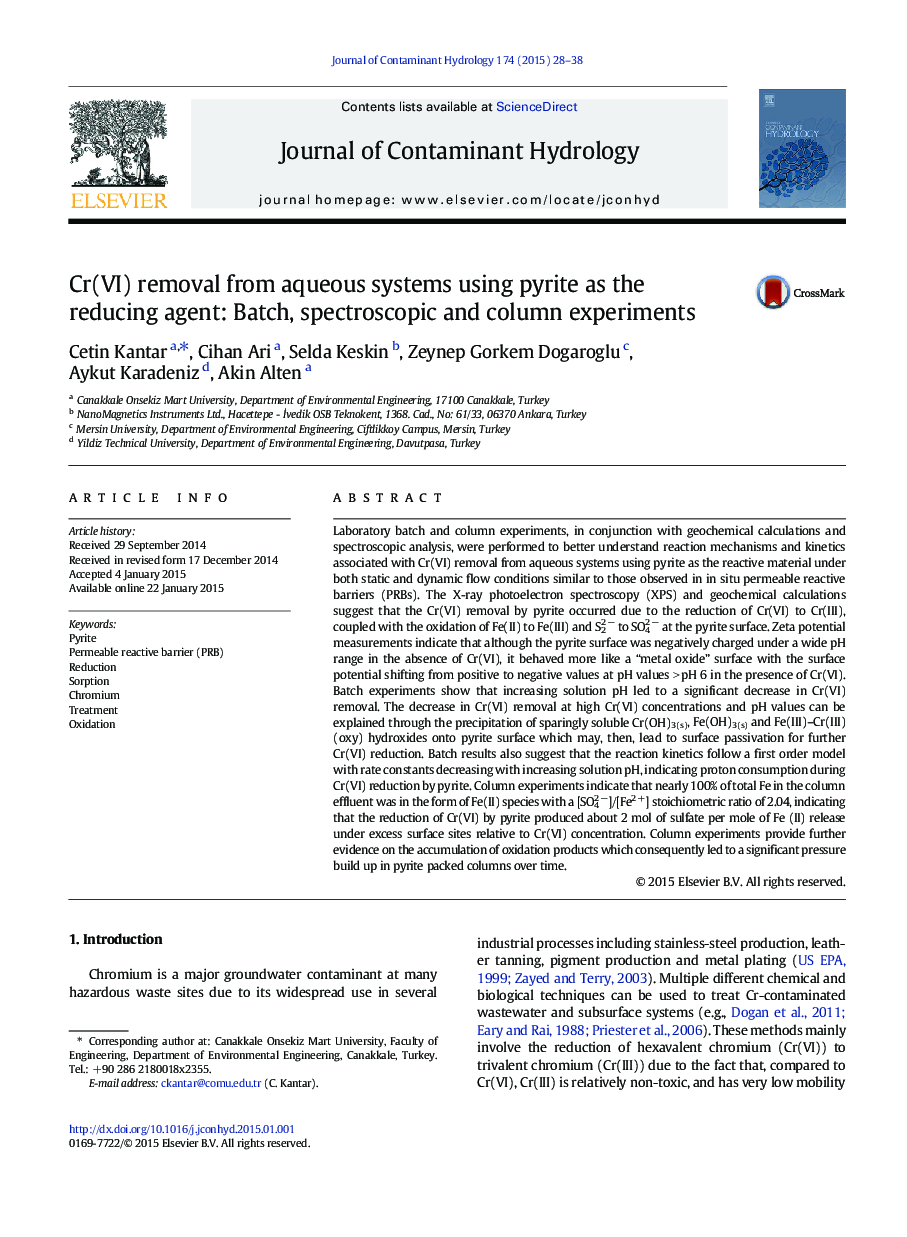| کد مقاله | کد نشریه | سال انتشار | مقاله انگلیسی | نسخه تمام متن |
|---|---|---|---|---|
| 4546470 | 1627034 | 2015 | 11 صفحه PDF | دانلود رایگان |

• Pyrite can be effectively used to treat Cr(VI) containing wastewaters.
• Both disulfide and ferrous iron reactive groups participate in Cr(VI) reduction.
• Cr(VI) reduction by pyrite leads to the accumulation of oxidation products.
Laboratory batch and column experiments, in conjunction with geochemical calculations and spectroscopic analysis, were performed to better understand reaction mechanisms and kinetics associated with Cr(VI) removal from aqueous systems using pyrite as the reactive material under both static and dynamic flow conditions similar to those observed in in situ permeable reactive barriers (PRBs). The X-ray photoelectron spectroscopy (XPS) and geochemical calculations suggest that the Cr(VI) removal by pyrite occurred due to the reduction of Cr(VI) to Cr(III), coupled with the oxidation of Fe(II) to Fe(III) and S22 − to SO42 − at the pyrite surface. Zeta potential measurements indicate that although the pyrite surface was negatively charged under a wide pH range in the absence of Cr(VI), it behaved more like a “metal oxide” surface with the surface potential shifting from positive to negative values at pH values > pH 6 in the presence of Cr(VI). Batch experiments show that increasing solution pH led to a significant decrease in Cr(VI) removal. The decrease in Cr(VI) removal at high Cr(VI) concentrations and pH values can be explained through the precipitation of sparingly soluble Cr(OH)3(s), Fe(OH)3(s) and Fe(III)–Cr(III) (oxy) hydroxides onto pyrite surface which may, then, lead to surface passivation for further Cr(VI) reduction. Batch results also suggest that the reaction kinetics follow a first order model with rate constants decreasing with increasing solution pH, indicating proton consumption during Cr(VI) reduction by pyrite. Column experiments indicate that nearly 100% of total Fe in the column effluent was in the form of Fe(II) species with a [SO42 −]/[Fe2 +] stoichiometric ratio of 2.04, indicating that the reduction of Cr(VI) by pyrite produced about 2 mol of sulfate per mole of Fe (II) release under excess surface sites relative to Cr(VI) concentration. Column experiments provide further evidence on the accumulation of oxidation products which consequently led to a significant pressure build up in pyrite packed columns over time.
Figure optionsDownload as PowerPoint slide
Journal: Journal of Contaminant Hydrology - Volume 174, March 2015, Pages 28–38